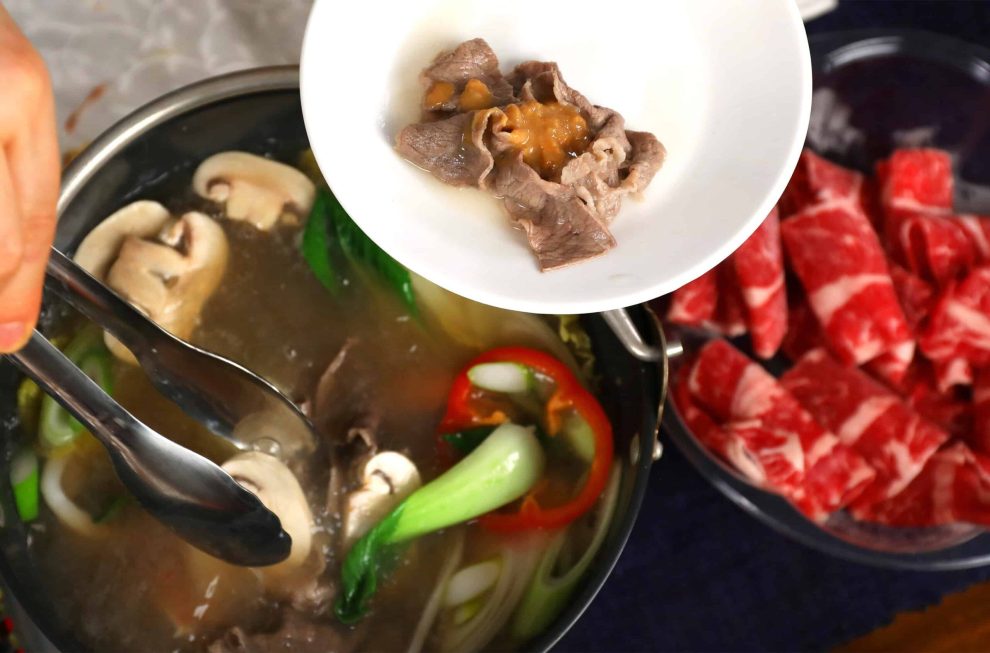Shabu shabu (in Japanese, しゃぶしゃぶ), is one of the most representative foods of Japanese cuisine. Although it shares certain similarities with other Asian dishes such as Chinese hot pot, it has a history and a preparation style that make it special. This dish is not only very tasty but has a special appeal: it is interactive, inviting diners to cook their own food at the table. To enjoy this meal, people must dip thin slices of meat and vegetables in a hot broth.
Although shabu shabu is undoubtedly Japanese, its creation is influenced by cooking techniques from other regions of Asia. The dish is believed to have its roots in Chinese cuisine, particularly in a variant of Mongolian hot pot called “Shuàn Yángròu”, which involves boiling lamb meat in hot broth. However, it was in Japan in the 1950s that shabu shabu took its current form. It was in Osaka where the Suehiro restaurant popularized this dish and registered the name as a trademark in 1955.
The broth in which the ingredients are cooked is usually simple, made with kombu (seaweed) and water, sometimes supplemented with a little soy sauce or mirin for a touch of flavor. The meat and vegetables are immersed in this boiling broth and quickly stirred back and forth. This process is essential, since the meat must be cooked quickly, so that it is tender and juicy.
In restaurants or at home, a pot of boiling broth is placed in the center of the table. Each diner has their own utensils, such as chopsticks, and can choose the ingredients they want to cook.
Once cooked, the ingredients are dipped in one of two typical sauces: ponzu, a sauce based on soy and citrus, or goma-dare, made with sesame paste, sugar and vinegar. Then, diners enjoy meat, tofu and vegetables, accompanied by steamed white rice. At the end, it is customary to mix the leftover broth with the remaining rice to enjoy a comforting soup.
Learn how to make homemade shabu shabu!














Add Comment